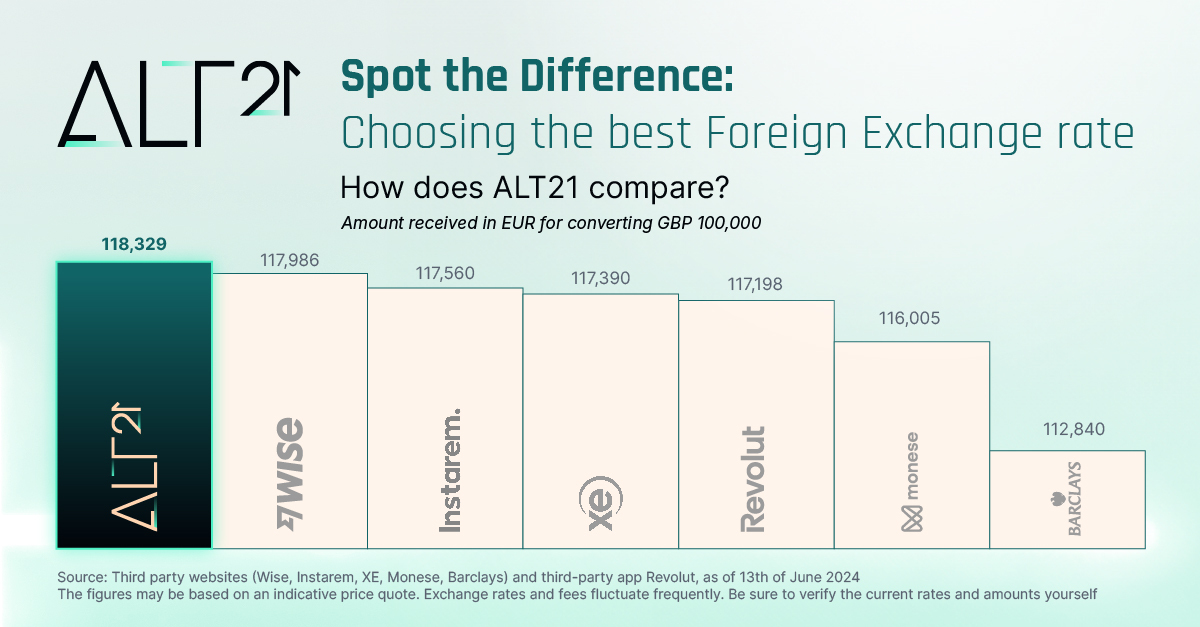It’s your significant other’s birthday, and you’ve decided to bake their favourite cake.
You take the afternoon off and are all primed and ready to go. But before you’ve even thought about donning your apron, you hit snag after snag after snag.
First, the supermarket’s short on eggs.
Luckily, you manage to find just about as many as the recipe requires. Crisis averted, you head home to — ahem — get cracking, only to discover your oven has picked this precise moment to join that great bakery in the sky.
Frustration mounting, you phone a friend for help. They generously agree to loan you their kitchen for the afternoon. Except your car won’t start, and the bus service doesn’t reach your friend’s house.
Instead of flying into a perfectly understandable rage, you take a deep breath and decide to go on foot. It’s a nice walk and, perhaps, the fresh air will calm you down. The problem is, given your horrible run of bad luck so far, you’re worried you’ll break the eggs en route.
As it happens, there’s some bubble wrap in one of the drawers. A bit unconventional, but it might work…
But what’s the best way to use it to keep your eggs safe?
Do you wrap all the eggs together or individually? Do you split the bubble-wrapped eggs between several bags?
More to the point, is there a particularly treacherous stretch of pathway where you should be extra careful, in case you trip and turn your precious eggs into a roadside omelette?
What’s your FX risk?
Like your ill-fated birthday cake, foreign currency transactions can be unexpectedly fraught.
Sometimes, a series of unfortunate events will make a currency’s value nosedive, putting at risk the livelihoods of those that do business in that currency.
More often, if you transact in a major currency like US Dollars, Euro, or Pounds, exchange rate fluctuations will typically stay within a narrower margin. But while your business might not fall and smash all its proverbial eggs, your profits could still suffer.
This is where a foreign exchange risk management strategy comes in.
Just as bubble-wrapping your eggs could help ensure they don’t break on the way to your friend’s house, managing foreign currency risk protects you from the worst effects of exchange rate fluctuations.
But, like bubble wrap, FX risk management is only effective if you use it correctly. Which is why you need a well-thought-out strategy.
Understanding what you’re up against
The first step towards building an effective FX risk management strategy is to find out which risks your business is exposed to.
To do this, you’ll need to take a look at any business transactions involving foreign currency and work out how exchange rate fluctuations could affect them.
Start by making a list of the currencies you do business in, and note the following:
- Is there a particular foreign currency or currencies you transact in regularly?
- Do the transactions involve an important client or supplier? And what percentage of your income or expenses do they make up?
- What’s the timing of the transactions? Weekly? Monthly? Quarterly?
- Is your exposure likely to change in the near future, for example because you’re planning on buying more stock from a foreign supplier, or expanding your operations in a foreign market?
Once you’ve identified where your exposure lies, you’ll need to find out how exchange rate fluctuations could affect you.
There are three main types of FX risk :
- Transaction risk
This is the most common type of FX risk, and it arises whenever you pay or get paid in foreign currency. Here, the risk is that you’ll earn less or pay more than you expected.
Imagine you’re a UK business that buys $4,000 worth of raw materials from a US supplier.
When you order the supplies, $4,000 works out at £3,200. But when your invoice falls due, the Pound has weakened against the Dollar, so $4,000 is now worth £3,300.
The same could happen when selling to a US business.
Let’s say you invoiced $4,000. But, this time round, when the invoice falls due it’s the Dollar that has weakened against the Pound. So when your client pays the $4,000, it works out at £3,100.
- Translation risk
Here, exchange rate fluctuations decrease the value of assets or increase the value of liabilities.
Imagine you’re headquartered in Spain, but have a UK office. Your UK premises are valued at £500,000, but because you file your accounts in Spain, you need to convert your premises’ value to Euro.
In 2021, £500,000 is worth €600,000. But when your accountant crunches the numbers in 2022, £500,000 is worth €550,000. A dip in the exchange rate has made your premises worth less, even though their market value hasn’t technically changed.
- Economic risk
This is a risk to your business’ long-term financial health as a result of one of the two other risks we’ve just discussed.
Sustained transaction risk, for instance, means there’s less money coming in and more going out over time, which could make you less profitable and create cash flow issues.
Similarly, sustained translation risk might result in your credit rating being downgraded, which would make it harder for you to get funding to grow your business.
Evaluate your options
With a clearer picture of your FX exposure and how it could affect your business, it’s time to evaluate your options.
There are five main ways you can manage your FX risk:
- Use the spot rate
Here, you’d exchange money on the day you need it, at the best exchange rate available.
This is the most high risk strategy, because there’s simply no way of knowing how much money you’ll receive — or pay — until the day you make the transaction.
Banks and foreign exchange bureaus also typically set their own exchange rates and may charge fees on top, so using the spot rate isn’t necessarily good value, even when the exchange rate is favourable.
2. Use a multi-currency currency account
This can work well if your business is exposed to only a handful of foreign currencies, and the amounts involved are relatively small.
Imagine you’re a UK business on retainer with a US client who insists on paying in Dollars. The retainer is around 10% of your income — big enough to make working with the client worthwhile, but not critical.
Here, you could open a US Dollar account.
Because the money isn’t a critically important source of income, you can hold it in Dollars until the exchange rate moves in your favour, at which point you can convert it back to British Pounds.
3. Putting your eggs in several baskets
Multi-currency accounts are also useful for another reason: they help you spread your risk.
To continue our previous example, imagine that, alongside your retainer client, you also had a US supplier.
You could use your US Dollar balance to pay the supplier’s invoices. But if the invoice amount is larger than your balance — for example because you’ve just made a withdrawal or your retainer client is late with a payment — you’ll have to convert Pounds to Dollars. And if the GBP/USD exchange rate is unfavourable, you may lose money.
You could mitigate this risk by also holding balances in Euro and Swiss Francs. This allows you to choose whichever currency has the most favourable exchange rate at the time the payment falls due.
4. Locking in your exchange rate
Have a big or critically important client or supplier?
It may be worth locking in your exchange rate for the long term.
This is usually achieved through a forward contract — an agreement to exchange X amount of one currency for another at a certain date in the future at a pre-agreed exchange rate.
The advantage of a forward contract is that it gives you certainty. Because you’ve locked in the exchange rate, you can tell for sure how much money is coming in (or leaving your account), so you can plan ahead.
The trade-off is that forward contracts are legally binding. So if the exchange rate moves in your favour, you could miss out on foreign currency gains or lose money.
If you’re exposed to translation risk, you can also lock in a favourable exchange rate using instruments called swaps.
This is an exchange of debts in different currencies. So, if you’re a UK business needing a loan in US Dollars, you could borrow from your local bank in Pounds, and exchange it for a Dollar-denominated loan taken out by a US-based business.
Local businesses usually get better rates and have to jump through fewer hoops than foreign businesses to get approved for a loan, so the two parties swapping debts both stand to benefit.
5. Keeping your options open
Need to manage your FX risk but want to retain some flexibility?
Options could be a good choice.
Like forward contracts, options enable you to lock in a favourable exchange rate in advance. But where forward contracts are legally binding, options are, well, optional. You have the right, but not the obligation, to exchange currencies at the agreed exchange rate.
The benefit of options is that they give you the best of both worlds.
If the exchange rate is unfavourable, you can exercise the option. And if the exchange rate moves in your favour, you can let the option expire and exchange foreign currency at the more favourable spot rate.
The catch is that you have to pay a premium. And the premium is due even if you don’t exercise the option.
Build your FX risk management strategy
FX risk management techniques aren’t one-size-fits-all. So, depending on what risks you’re exposed to — and the size of that exposure — you might benefit from a mix of techniques.
Imagine you’re an Italian company that imports raw materials from the UK.
You can’t make your products without this raw material. So, you could argue that it’s worth entering a forward contract to lock in the GBP/EUR exchange rate, since you’re going to have to buy supplies for sure.
The problem with this approach is that your entire FX management strategy hinges on forward contracts.
That’s fine when the market is relatively stable. But what if something unexpected happens and the exchange rate tanks? Airlines that managed their risk exclusively with forward contracts learned the answer the hard way when fuel prices hit record lows in 2020.
The flipside is that options cost money. And what if you end up not using them?
With this in mind, it may be worth having a mix of forwards and options. This will give you certainty, but also some flexibility to react to market developments.
At the same time, you might also want to have a multi-currency account in place for lower value, less frequent expenses.
The idea is to spread your risk and, so, keep the odds in your favour as much as possible.
Needless to say, businesses, like human beings, change over time. You might decide to pull out of a market, enter a new one, or change suppliers. And every decision you make will have an impact on your FX exposure.
For this reason, it’s also important to review your FX risk management strategy regularly to make sure it continues to meet your needs.
FX risk is inevitable, but you can keep it in check
So, did you reach your friend’s house with all the eggs in one piece?
We’d like to think you did, and that the birthday cake was a triumph.
Be that as it may, the more important point is that, just as you couldn’t possibly predict you’d have to deal with eggs being out of stock, a busted oven, and a flat car battery in one afternoon, you can’t control the market forces that could make exchange rates skyrocket or hit the floor.
Which is why it’s crucial to understand where your FX exposure lies, what you can do to manage the risk, and to use that knowledge to build a strategy that protects your business in case of adverse events.
As for your significant other’s birthday cake…
Well, if your eggs don’t make it to your mate’s house, you can always buy them a Colin the Caterpillar from M&S.
Find out how one of our partners can help – powered by our technology platform.



